Solicita ahora para formar parte de nuestra próxima grupo de Becados en Ciencia científicos comunitarios y líderes comunitarios.
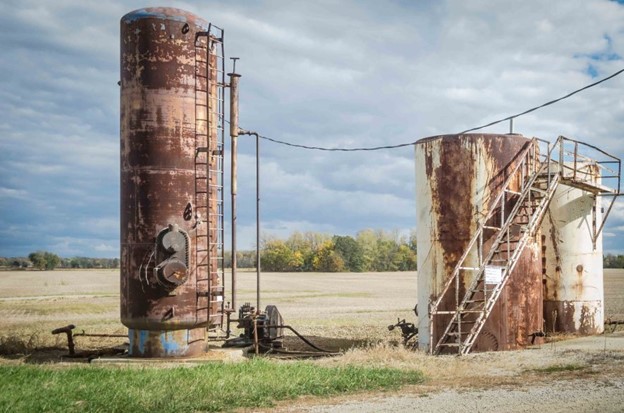
Foto: Pozo de inyección de clase II de la unidad Mosher en Cardington, condado de Morrow, OH. Crédito Columbus Community Bill of Rights
Oil and gas companies have been granted permits to inject toxic, radioactive fracking waste into Class II injection wells within Columbus Metro watersheds, which provide drinking water for more than 1.2 million residents of the greater Columbus area. As of 2023, there are 13 injection wells upstream of Columbus metro located in Delaware and Morrow counties which have been injected with millions of gallons of oil and gas waste, euphemistically called “brine”. This waste can contain more than 1,000 different chemicals, of which many are carcinogens, neurotoxins, and endocrine disruptors, and also contains radium 226 and 228, in addition to other radionuclides.
The Columbus Community Bill of Rights group monitored baseline water quality in publicly-accessible stream sites both upstream and downstream of injection wells in Morrow and Delaware counties from August 2021 to August 2022. While no evidence of brine leaks or spills were detected in this year, this baseline study could help determine if there is a measurable impact from the injection waste releases in the future. CCBOR stresses that the best practice would be to have continuous monitoring near the wells to hold the industries accountable for leaks, spills, or migration of the liquid waste into the water supply. As part of the group’s objective to protect their water, it aims to pass the Columbus Community Bill of Rights charter amendment to give citizens the legal right to say no to current and future oil and gas industry contamination in their watersheds.
The immediate goal of this water testing initiative was to motivate the need for long-term water quality monitoring by the City of Columbus near the injection wells. Ultimately, the goal of this and related work is to ensure a ban on injection well permits, solid frack waste (drill cuttings) disposal in landfills within the watershed, and spreading oil and gas brine for dust and ice control.
To read the Final Water Quality Report, click here.
This project is officially complete, but the team is open to new collaborators in their longer term ongoing efforts. If interested, see how to get in touch with us below:
¿Le interesa trabajar como científico voluntario? ¡Inscríbete ya!
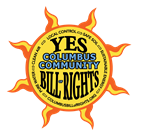
Carta de Derechos de la Comunidad de Columbus
https://columbusbillofrights.org/
In Central Ohio, the waterways of the region make up the Upper Scioto watershed, which provides drinking water for more than 1.2 million people in the Columbus metro area alone1.
The fracking waste in the injection wells located in the Upper Scioto watershed comes from the Utica and Marcellus Shale formations which have high levels of naturally occurring radioactive elements, primarily radium 226 and 228. As a result, this waste can have radiation levels up to 3,600 times over the U.S. Environmental Protection Agency’s safe drinking limits2. In part because of federal loopholes, millions of tons of solid and trillions of gallons3 of liquid radioactive oil and gas waste are being disposed of nationwide as if they were safe. Radium 226 is particularly troubling because it will remain radioactive for thousands of years, as it has a half-life of 1,600 years. Oil and gas production waste brines injected into the Columbus Metro watershed between 1982 and 2020 within Morrow County equate to an amount that would fill more than 1,011 Olympic-sized swimming pools, almost 16 million barrels.
Columbus Community Bill of Rights (CCBOR) was formed in 2014 by a group of concerned citizens in order to protect their water from oil and gas industrial harms. CCBOR is a grassroots, all-volunteer group that believes all people have inalienable rights to safe water, soil, and air, as well as the right of local self-governance to prohibit substances and activities that would violate those rights. CCBOR also recognizes the rights of ecosystems and natural communities within the city to be free from such harmful activities. Throughout their four campaigns more than 50,000 Columbus residents have signed their petitions.
CCBOR used their water quality testing to determine if there was any current impact by the injection wells, and to establish a baseline data set for future comparisons. They aim to use the study and its resulting report motivate the city and state to take greater protection of the watersheds, keeping in mind that these injection wells may leak at any time in the future. These actions will provide impetus to pass the Columbus Community Bill of Rights charter amendment.
CCBOR has worked to give Columbus citizens a legal voice in decisions relating to oil and gas. The group has partnered with the Community Environmental Legal Defense Fund (CELDF) to create a charter amendment that would eliminate fracking and frack waste dumping in the community. Beginning in 2014, CCBOR has submitted four ballot initiatives and each time, either the City Council, Board of Elections, the state legislature or the courts have prevented the charter amendment from reaching the ballot.
Enlaces a documentos de referencia y recursos relacionados con el proyecto:
CCBOR members, with the training and guidance of scientists, tested the stream water up- and downstream of injection wells in Morrow and Delaware counties from August 2021 to August 2022. To test for injection well leaks or spills of the highly salty “brines”, the team went out every two weeks to measure total conductivity (basically, the saltiness) of 9 sites, along with other basic water quality parameters (total dissolved solids, temperature, and turbidity). Quarterly, CCBOR and the Stolz lab group at Duquesne University collected samples for measurements of brine-indicating ions, dissolved metals, and methane.
The study plan and monitoring sites were designed and selected by Dr. Christopher Spiese, an associate professor at Ohio Northern University.
See published technical report above.
CCBOR is continuing the project with the aim of continuous conductivity monitoring with Dr. Karen Knee, professor at American University.
Dr. Chris Spiese designed the study in 2020 after discussion with CCBOR members. In May 2021, the Thriving Earth project began. In June 2021, the Sierra Club Ohio chapter donated conductivity meters that the group began to use for biweekly stream measurements. In August 2021, Dr. John Stolz and his lab members drove from Pittsburgh to meet CCBOR members for the first of 4 field trips to collect samples, which were measured back at Duquesne University. Several CCBOR members contributed to what would eventually be over 25 field trips in all weather, generating a year long baseline water quality data set.
By early 2023, all the laboratory measurements were complete and CCBOR began to write a report, generate plots, and contextualize its findings. The report was completed in August 2023 and will soon be available on CCBOR’s webpage with an accompanying white paper on the risks to drinking water in the Columbus area from oil and gas extraction activities. While no indications of brine releases (spills or leaks) were detected by high downstream salinity or indicator ions from August 2021-August 2022, it is imperative to have such a high quality baseline of water chemistry throughout the year, in case a spill occurs in the future.
To continue to monitor this critical watershed for Columbus metro, in early 2022, the group also began a collaboration with Dr. Karen Knee at American University to establish continuous conductivity monitoring select stream sites, and to collect streambed sediment samples for radium isotope analysis. This work is ongoing.
 Carolyn Harding es una activista de base comprometida con la protección del agua, el aire, el suelo y los derechos por el bien de toda la vida en este planeta. Es coorganizadora de la Carta de Derechos de la Comunidad de Columbus (ColumbusBillofRights.org), que trabaja para dar a los ciudadanos de Columbus el derecho a decir No a la fracturación hidráulica y al vertido de residuos de fracturación radiactiva. Es presentadora y productora de #GrassRoot_Ohio Radio/Podcast -conversaciones con activistas que trabajan por la justicia social, racial, económica y medioambiental. El programa, de media hora de duración, se emite los viernes a las 17.00 horas en wgrn.org y está disponible en SoundCloud, Apple y Spotify. Su familia, la buena comida, la gente, las historias, el vino tinto y el café evitan las posiciones prona y fetal.
Carolyn Harding es una activista de base comprometida con la protección del agua, el aire, el suelo y los derechos por el bien de toda la vida en este planeta. Es coorganizadora de la Carta de Derechos de la Comunidad de Columbus (ColumbusBillofRights.org), que trabaja para dar a los ciudadanos de Columbus el derecho a decir No a la fracturación hidráulica y al vertido de residuos de fracturación radiactiva. Es presentadora y productora de #GrassRoot_Ohio Radio/Podcast -conversaciones con activistas que trabajan por la justicia social, racial, económica y medioambiental. El programa, de media hora de duración, se emite los viernes a las 17.00 horas en wgrn.org y está disponible en SoundCloud, Apple y Spotify. Su familia, la buena comida, la gente, las historias, el vino tinto y el café evitan las posiciones prona y fetal.
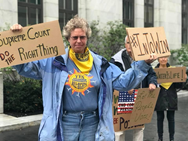 Kathy McGlone se crió en Columbus y se licenció en Biología de Campo en el Departamento de Botánica de la OU. Obtuvo su certificación como profesora en la OSU. Kathy enseñó Biología, Biología Básica, Ecología, Ciencias de la Tierra y del Espacio y Ciencias Físicas en el sureste de Ohio durante 30 años. Obtuvo su Máster en Ciencias Medioambientales en la OU. El condado donde ella residía, Monroe, fue inundado o destruido por el fracking. Kathy se jubiló en 2013 y se unió a CCBOR.
Kathy McGlone se crió en Columbus y se licenció en Biología de Campo en el Departamento de Botánica de la OU. Obtuvo su certificación como profesora en la OSU. Kathy enseñó Biología, Biología Básica, Ecología, Ciencias de la Tierra y del Espacio y Ciencias Físicas en el sureste de Ohio durante 30 años. Obtuvo su Máster en Ciencias Medioambientales en la OU. El condado donde ella residía, Monroe, fue inundado o destruido por el fracking. Kathy se jubiló en 2013 y se unió a CCBOR.
 Bill Lyons es un profesor de matemáticas y ciencias que ha enseñado durante casi 40 años en cuatro continentes en los niveles de secundaria y universitario. Es coorganizador del grupo Columbus Community Bill of Rights y presidente de la Ohio Community Rights Network. Es activista desde 2015, cuando se involucró en los movimientos por los derechos comunitarios y los derechos de la naturaleza porque le apasionan la democracia local y la justicia social y medioambiental.
Bill Lyons es un profesor de matemáticas y ciencias que ha enseñado durante casi 40 años en cuatro continentes en los niveles de secundaria y universitario. Es coorganizador del grupo Columbus Community Bill of Rights y presidente de la Ohio Community Rights Network. Es activista desde 2015, cuando se involucró en los movimientos por los derechos comunitarios y los derechos de la naturaleza porque le apasionan la democracia local y la justicia social y medioambiental.
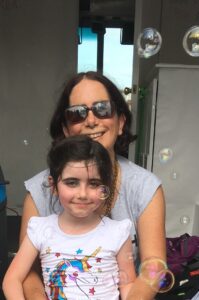
Karen L. Knee es profesora asociada del departamento de Ciencias Ambientales de la American University de Washington, DC. Creció en Charleston, Carolina del Sur, y estudió Ciencias Ambientales en la Universidad de Brown (licenciatura) y en la Universidad de Stanford (doctorado). Antes de incorporarse a la facultad de la UA en 2012, fue becaria Fulbright en Ecuador, donde investigó cómo la minería y otros usos del suelo afectaban a la calidad del agua en los arroyos del bosque nuboso, y becaria posdoctoral del Smithsonian. La investigación de Karen se centra en la calidad del agua, la contaminación del agua y el uso de radioisótopos naturales como trazadores de procesos ambientales. Vive en Greenbelt, Maryland, con su pareja Charlotte, su hija Maggie, dos perros y un gato. En su tiempo libre disfruta leyendo, nadando, haciendo senderismo, viajando, cocinando y prestando servicios a la comunidad.
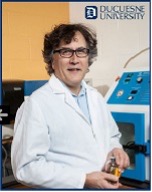
John Stolz is Director of the Center for Environmental Research and Education; Professor, Environmental Microbiology Bayer School of Natural and Environmental Sciences Department of Biological Sciences; Center for Environmental Research and Education at Duquesne University in Pittsburgh, PA. John is interested in both fundamental questions in microbial ecology as well as the application of unique microbial species for bioremediation. There are three major areas of interest in his lab:1) the ecophysiology, biochemistry, and molecular biology of dissimilatory metal reducing bacteria, 2) the ecophysiology of phototrophic prokaryotes and 3) the environmental impacts and microbiology of unconventional shale gas extraction. John has a Ph.D. in Biology from Boston University.
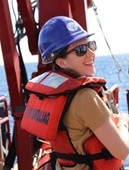 Megan Duffy is a biogeochemist interested in how carbon is transformed and transported across different interfaces: between rivers and oceans, and from algae to deep ocean sediments. She’s passionate about community-based research that builds knowledge and tools for climate adaptation on an ecosystem scale. Megan got her PhD in Oceanography from the University
Megan Duffy is a biogeochemist interested in how carbon is transformed and transported across different interfaces: between rivers and oceans, and from algae to deep ocean sediments. She’s passionate about community-based research that builds knowledge and tools for climate adaptation on an ecosystem scale. Megan got her PhD in Oceanography from the University
of Washington in early 2022. After a short stint as a scientist at Earthjustice working to challenge oil and gas projects internationally, she recently began postdoctoral fellowship at the University of Vermont to study how warming winters are impacting soil and water quality.

Red de Derechos Comunitarios de Ohio (ohiocrn.org)
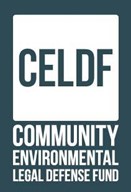
Fondo Comunitario de Defensa Legal del Medio Ambiente (CELDF) (celdf.org)
(c) 2024 Thriving Earth Exchange